Inside a nuclear tomb: The underground store that's humanity's first attempt to dispose of nuclear waste for 100,000 years
Marianne Guenot

- Radioactive waste from nuclear plants is stored in temporary facilities around the world.
- Finland has a different idea: burying the waste forever, 1,400 ft underground encased in metal.
The world has a nuclear waste problem — hundreds of thousands of tonnes have been produced with no good place to put it.
It typically goes in temporary facilities. Experts agree that a safe, permanent solution is needed.
Finland is on the cusp of turning that into reality, beating countries like China, the US, and the UK to produce the world's first forever home for radioactive waste.
Insider visited the site, called Onkalo, to see what it was like. Insider covered the costs of the trip, in line with our reporting policies.
It took me further underground than I've ever been, into a facility that will soon be brimming with nuclear waste.
Onkalo is a sprawling site, with 31 miles of tunnels that reach 1,300 feet under the ground.
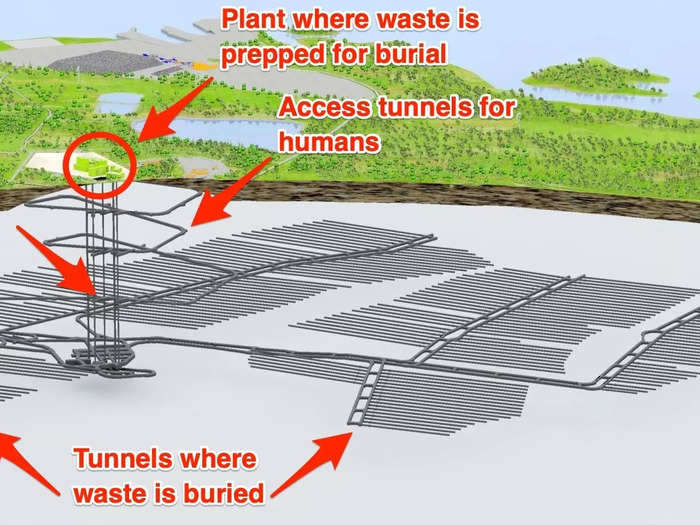
The concept is simple: put the waste someplace far from people, where it can decay undisturbed.
But this can take 100,000 years — and humans have never before had to plan for something to last remotely that long.
The result is the Onkalo plant, the product of almost 20 years of work that will be in operation for another 100 years and will cost an estimated 3.5 billion euros ($3.7 billion) once it is full.
An aerial view of the site is annotated to show the location of the Olkiluoto nuclear power plant and of Onkalo.

Here is what's at the site:
- A preparation plant, where the nuclear waste is encased in canisters made of iron and copper to protect it.
- 3 miles of human access tunnels that spiral down to about 1,300 ft.
- An elevator shaft running straight down about 1,500 ft.
- A hive of sub-tunnels, where the waste will be sealed away forever.
The facility aims to hold about 3,250 of these massive canisters, which are about 10 ft long or longer. In the end, it will store about 6,500 tonnes of the spent nuclear fuel in total.
Posiva, the company that operates Onkalo, estimates that the tunnels will be full in about 100 to 120 years.
Here is the way in to the access tunnels, seen from above.
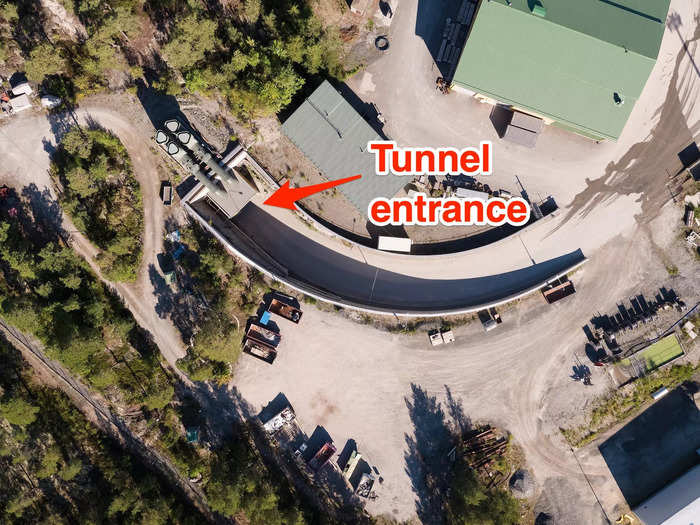
We drove down in a van, deeper and deeper.
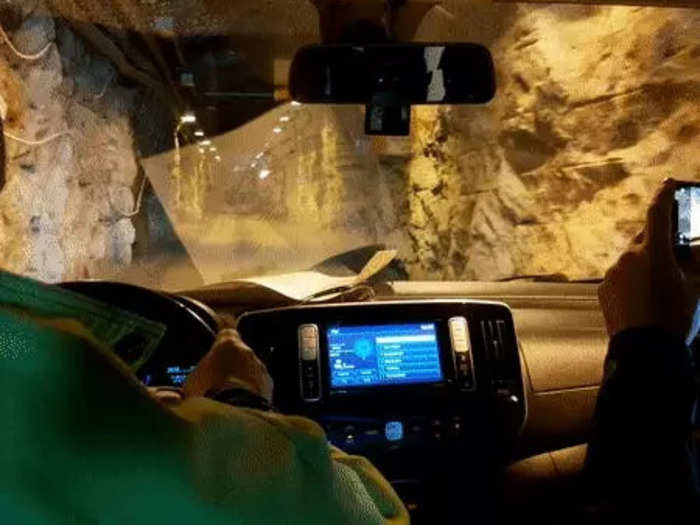
The trip took around 20 minutes.
The tunnel was just wide enough for one vehicle. I was aware I'd never been this deep underground before.
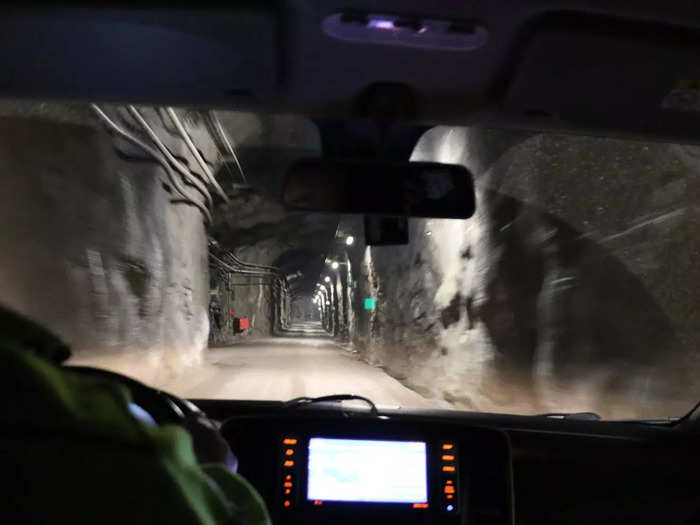
Signs at regular intervals reminded us how far we'd come — this green one marks 3.1 km, or 1.9 miles, to the surface.
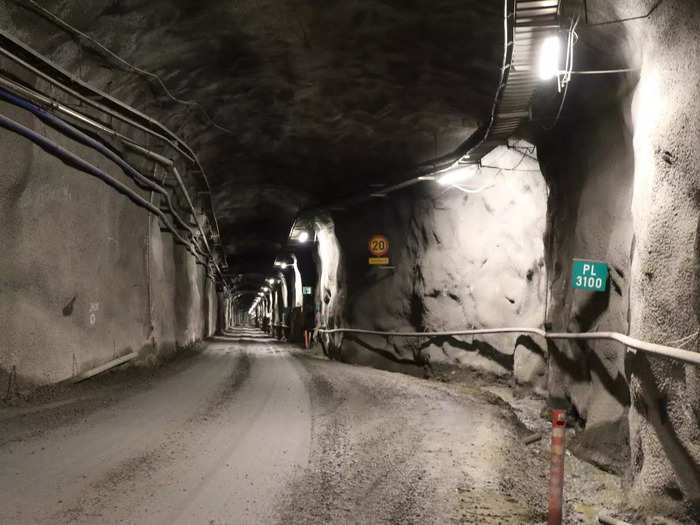
We got a bunch of gear to keep us safe underground.
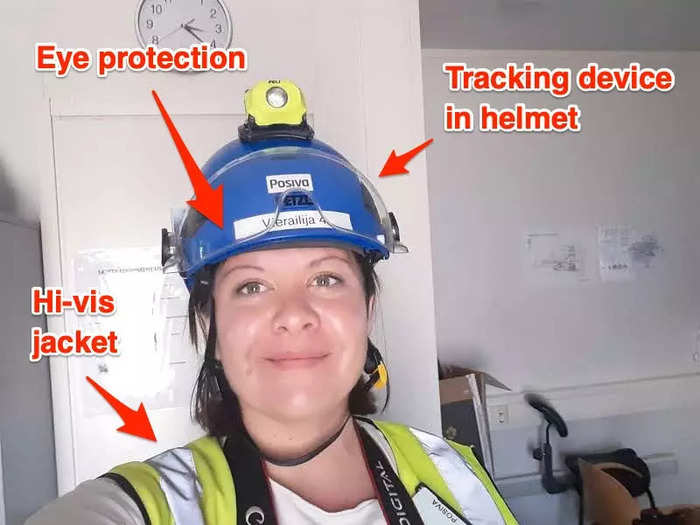
I was given personal protective equipment like heavy protective boots and a flashlight that I had to wear at all times.
My helmet was equipped with a tracking device that allowed security officers to know how many people are in the tunnels.
This is the bottom. These heavy metal doors mark the beginning of the area where the nuclear waste will be held.
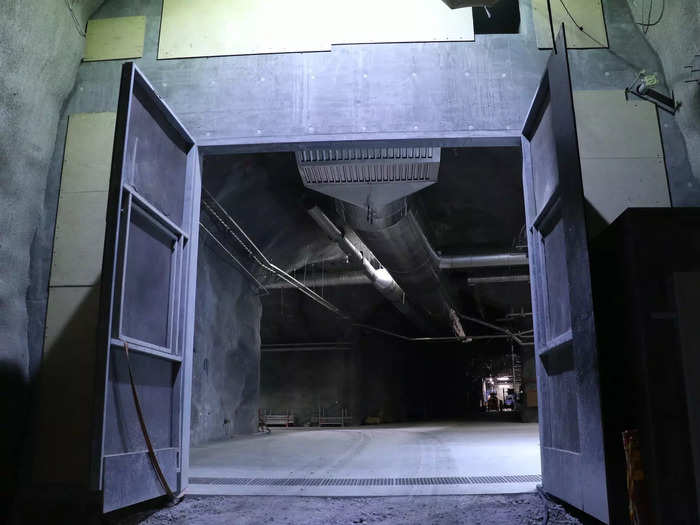
After the century-long storage operations are over, these tunnels will be sealed and the site closed forever.
Around me were thousands and thousands of feet of rock like this — migmatite with veins of granite.
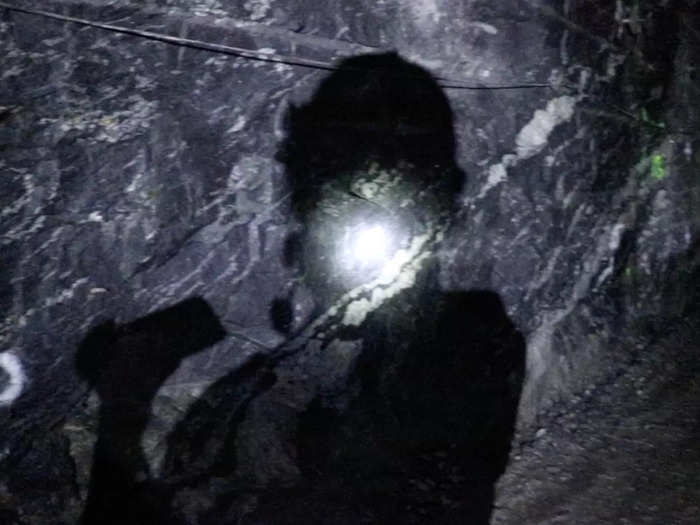
A big reason the site is here is because of the rock.
"You essentially want an area of rock that isn't gonna change for millions of years," said Lewis Blackburn, a materials scientist from the University of Sheffield in the UK.
Blackburn researches ways to make nuclear waste safer. He wasn't involved in the making of Onkalo.
Geologists need to be sure that the storage facility is not going to crack, erode, or be split apart by an earthquake.
For that, you need rock that is either very soft or, like in Onkalo, very hard.
The rocky chamber will be the final home for nuclear fuel roads like these — metal poles embedded with chunks of refined uranium.
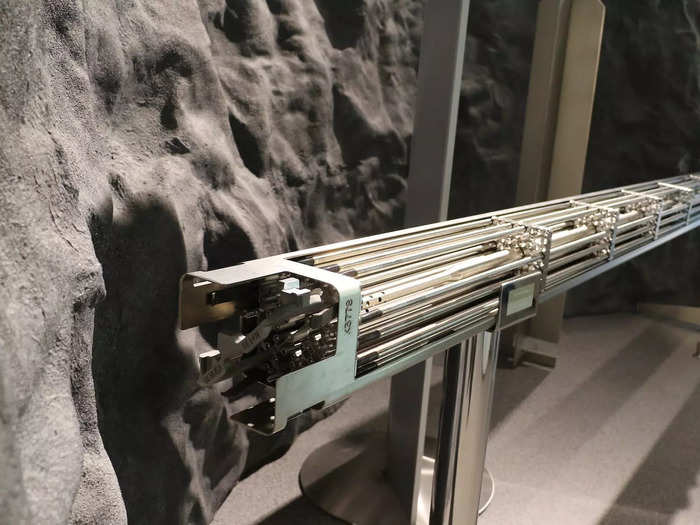
Some 250 to 500 half-inch-long pellets of uranium, refined and treated with a process that turns the fuel into a type of ceramic, go into a single rod.
Dozens of these rods are brought together to make a single fuel assembly. Each assembly contains between 370 and 1200 lb of uranium, depending on which reactor they are going to.
The rods spent their working life stacked by the thousand in a reactor core, making heat that will be turned into electricity. This is me in a (replica!) reactor, with a wall of rods behind.
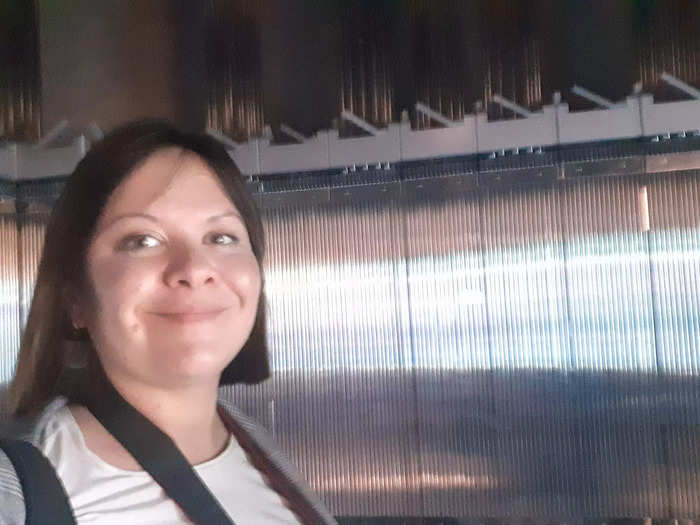
The fuel is only mildly radioactive before it is put in the reactor. After it is taken out of the reactor, it is at its most radioactive.
If a human were directly exposed to the raw fuel at that point, it could be lethal. But the fuel is carefully packaged and handled to prevent any exposure.
The rods come out spent, hot, and highly radioactive. Their first stop is 40 years in nearby cooling ponds.
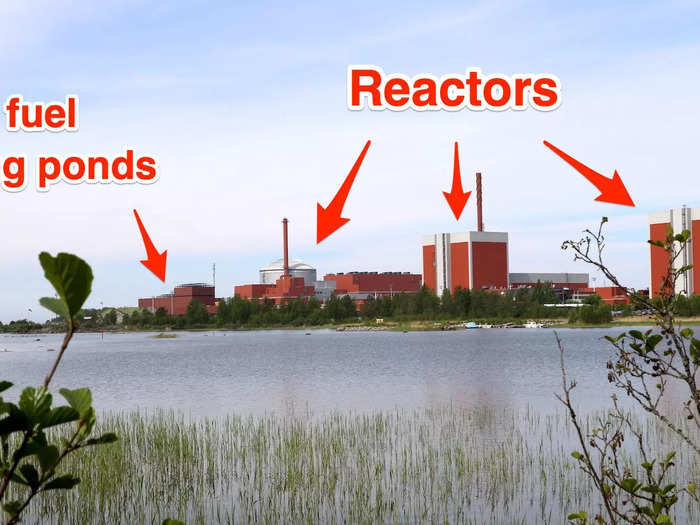
The pools have two purposes: the water cools down the fuel and acts as a barrier against the radiation.
At the Onkalo site, the pools are right next to the reactor. All the waste the plant has produced is still here.
Other facilities take the nuclear waste out into huge concrete vats above ground. Both techniques are safe but require constant maintenance.
Posiva has a plan after the pool phase. The spent rods — which haven't been in a reactor for 40 years — will go in huge metal tubes like this.
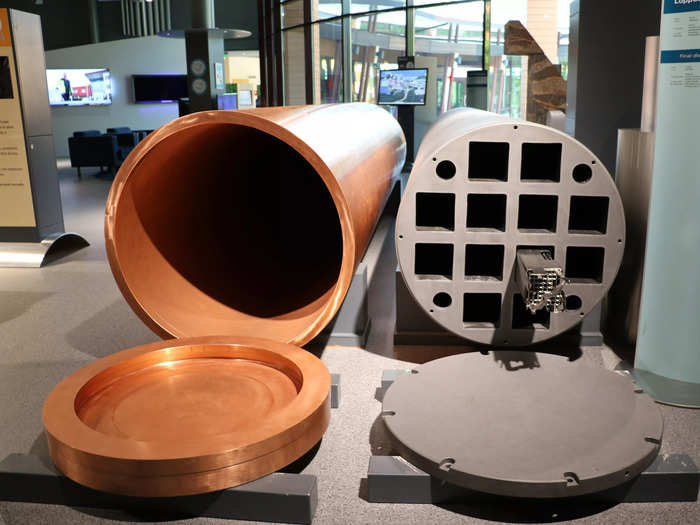
By this point, the fuel has lost 99.9% of its radioactivity at the point of unloading from the reactor, but still needs to be kept away from people.
The inner gray tube is thick cast iron and the outer layer is copper.
The iron is to protect the rods from pressure or other unexpected forces, while the copper is resistant to corrosion.
Water is the main enemy of long-term storage and with enough time will seep into anything, so it must be kept away from the spent fuel for as long as possible.
It would take a very long time for the water to eat through the canisters and the ceramic uranium pellets.
To avoid water getting to the canisters, the next defense is a special type of clay called bentonite.
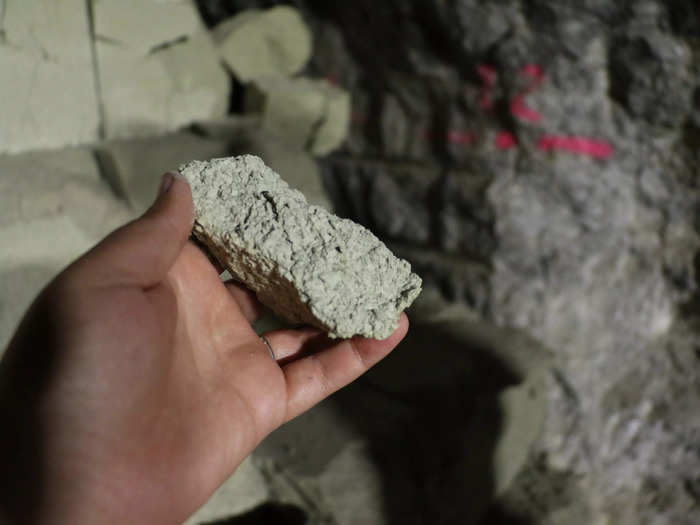
Every canister gets wrapped in bentonite.
Antii Mustonen, a geologist and research manager who has been working at Onkalo for 16 years said the material swells up on contact with water, creating a tight seal around the canister.
"It's like self-healing," he said.
After being fully sealed, the waste canister will enter an elevator here to be taken down to permanent storage.
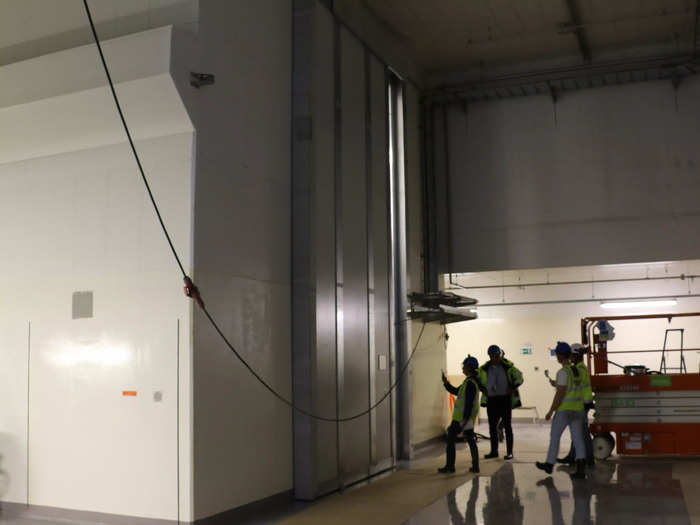
This is the other end of the elevator shaft.
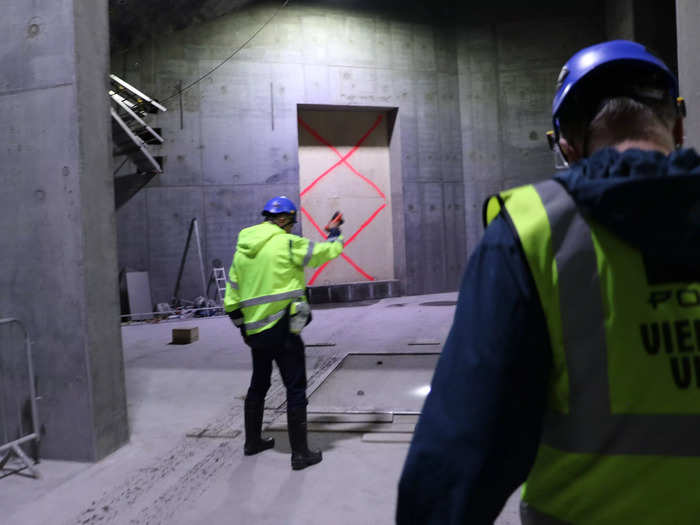
After the canister arrives, it can be buried for good in the hive of side tunnels, a process that is almost entirely automated.
This video explains how it works:
An automated digging machine goes along each tunnel to make a shaft for each canister, like in this animation.
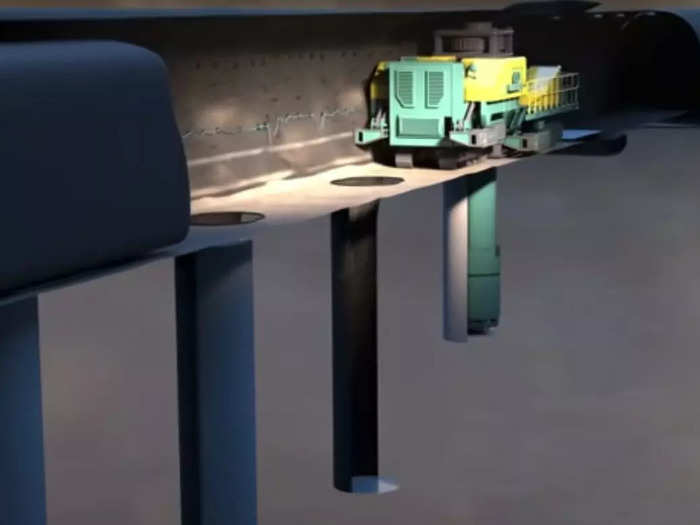
This is a prototype of a real-life hole-drilling machine.
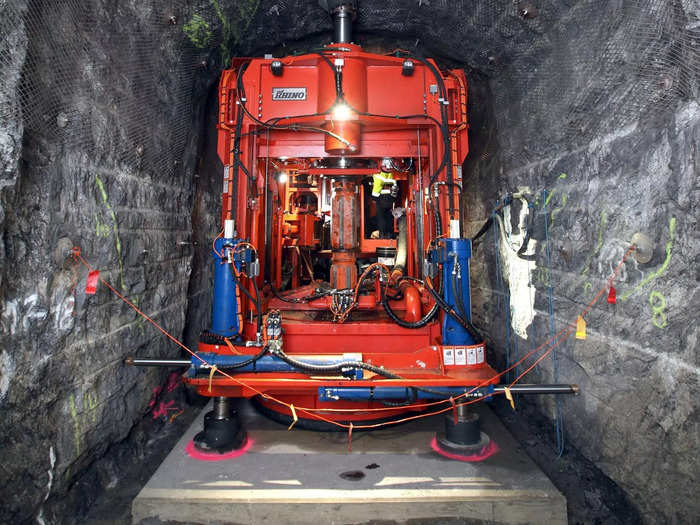
Another machine lines the hole with bentonite to protect the canister from water.
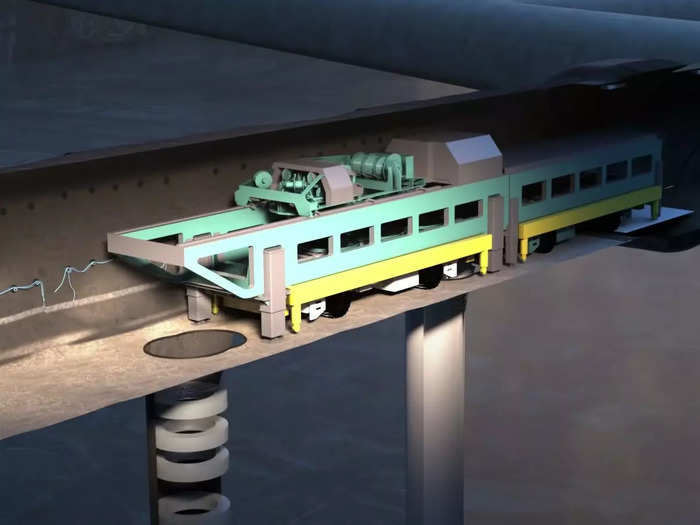
This is one of the deposition tunnels in real life. The canisters will be buried into the floor.
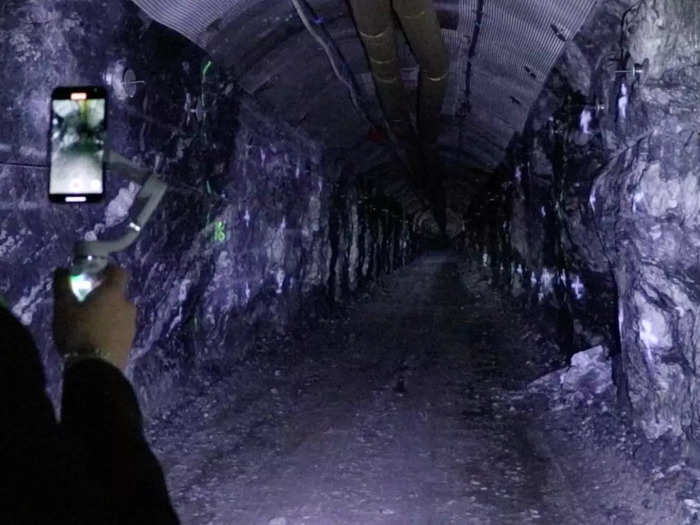
Five of these tunnels have been built to date, waiting for the signoff from the Finnish government for the first waste to be buried.
A third machine — also automated — picks up a canister from a short-term storage room like this.
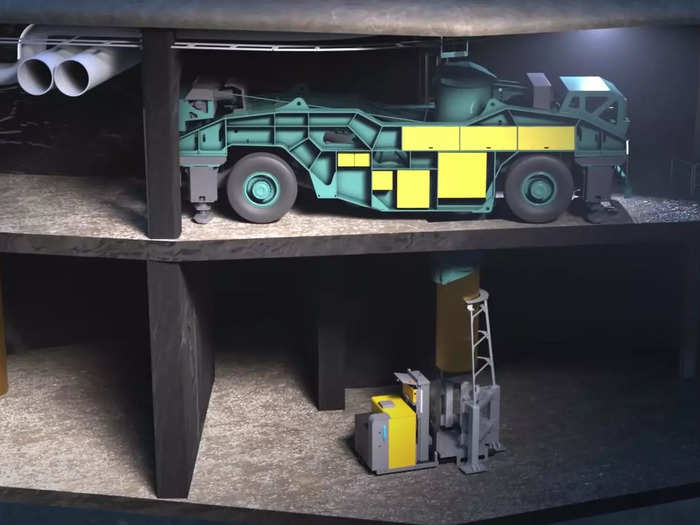
The machine carried each canister in a temporary extra radiation shield during transport, in case a human operator needs to get close.
And takes it to the prepared hole, lined with bentonite, where it deposits it.
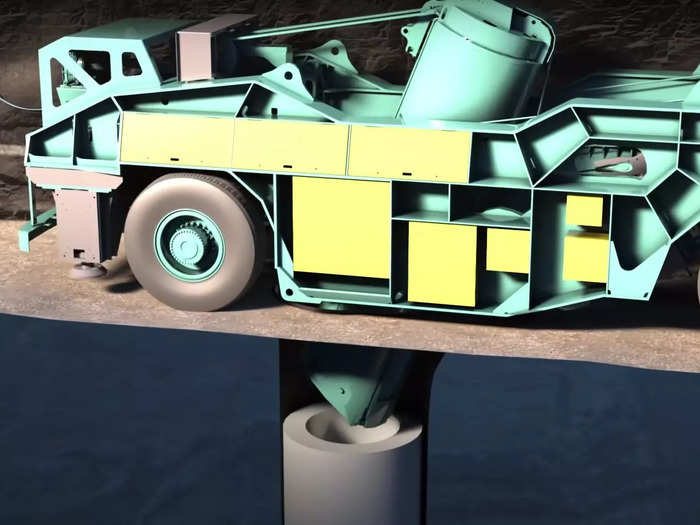
Here is a real-life prototype of the canister-moving machine.
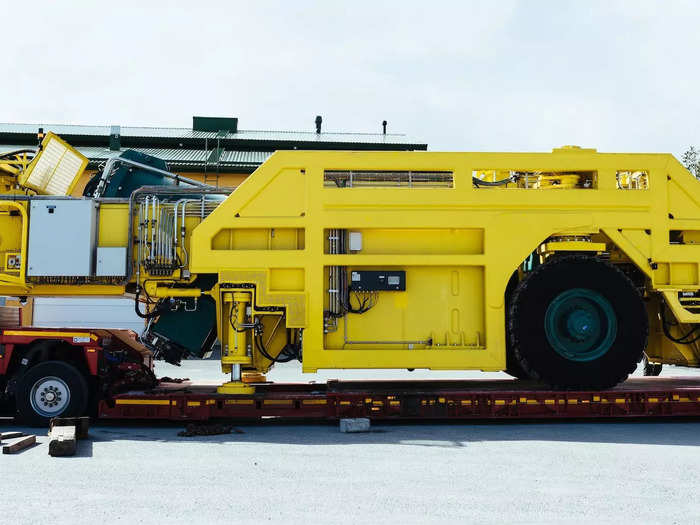
The shaft is then sealed.
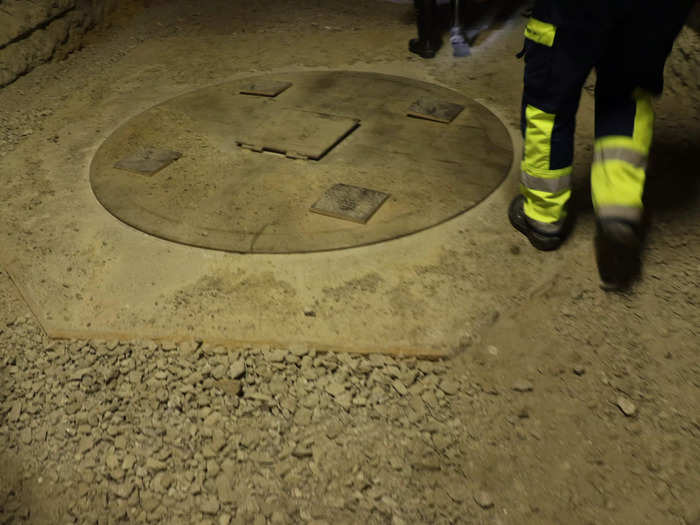
The finished shafts will look a bit different from this, the holes will be backfilled with a bentonite layer to complete the seal.
As each hole is filled, another machine comes and fills the entire thing with more bentonite.
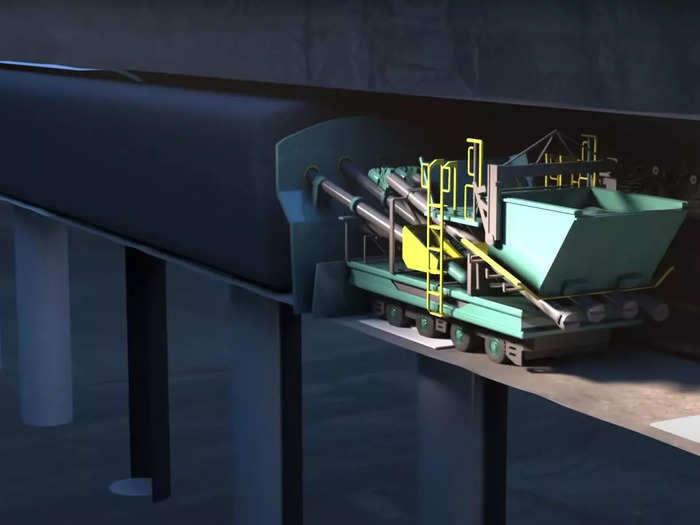
Each finished tunnel will be sealed further with a massive concrete plug, like this.
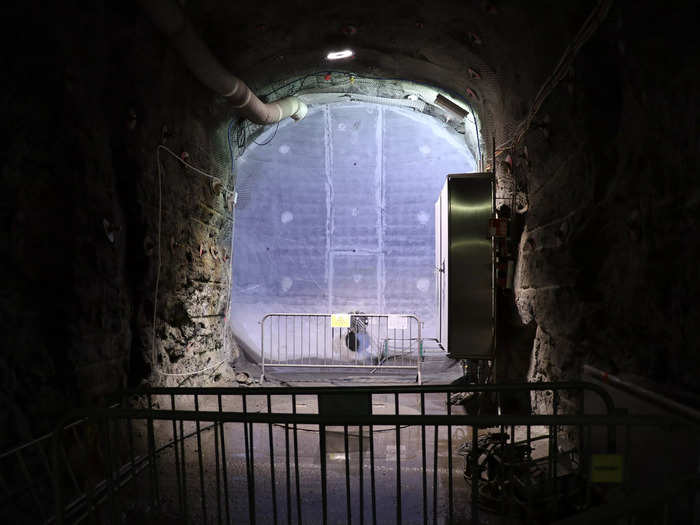
The photo shows the end of a tunnel that was used with dummy canisters to test the process.
Humans will still need to work on the site until it is closed, sometime around 2120.
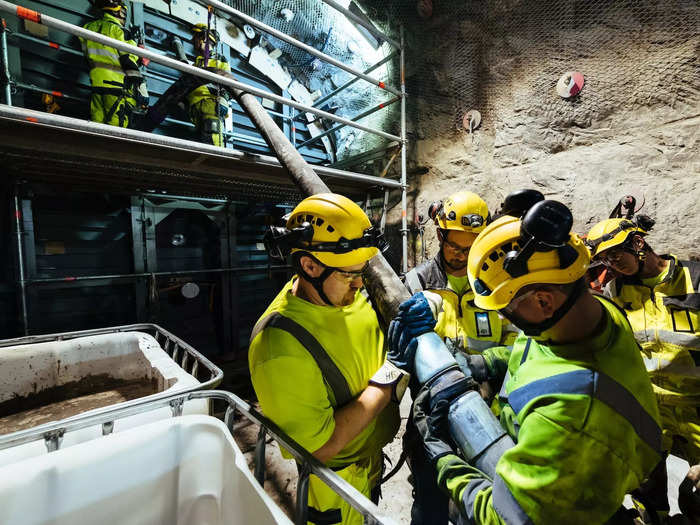
Posiva is contracted to run this site until it is filled with the refuse from Finland's two current active nuclear plants.
Waste will be buried in batches and each batch will be quickly sealed away. But people will still need to access the tunnel complex to oversee the process and to blast out new tunnels.
The cave complex comes with bathrooms, showers, and a cafeteria where workers can take a break.
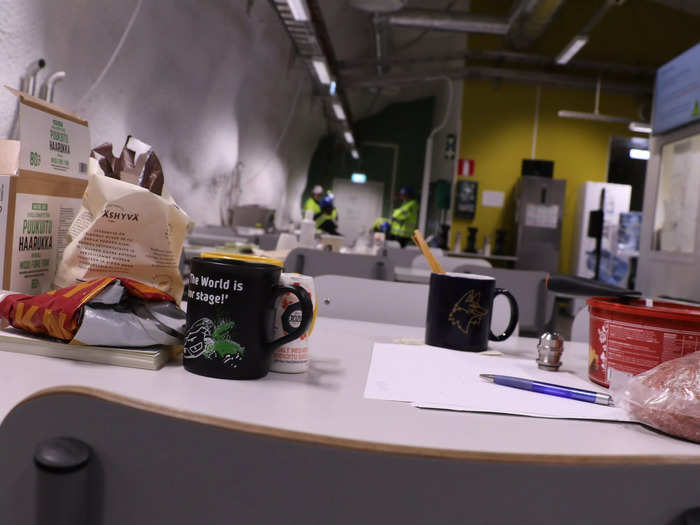
The workers spend between 8 and 12 hours underground in one go. Asked whether this was difficult, Mustonen said it wasn't
"I don't think any special character is needed here because it's like a normal parking hall in the city," he said.
It is more annoying to go down in the tunnels on a warm summer's day like the one when I was visiting, but less so when it is cold and dreary outside during the short winter days, he said.
There is a fully-stocked cafeteria for the workers. Pea soup, a traditional Finnish dish, is on the menu every Thursday.
The workers don't have parties down there... yet!
I asked Mustonen if there had been any parties in the tunnels.
"No. Not yet!" he replied jokingly.
He said, however, that there have been events. Every time a tunnel is finished, he said, the miner's tradition dictates you lather the end of the tunnel with tar and have a little ceremony.
Posiva also organized a concert at the bottom of the elevator shaft in honor of a music festival. Operatic bass singer Mika Kares took advantage of the amazing acoustics of the room on the occasion, as can be seen here.
Engineers are confident they've thought about every feasible possibility.
Mustonen, the Onkalo geologist, says people probably don't realize how much work has gone into future-planning the site against every eventuality.
"Maybe they ask: have they thought of this?" he said
The answer, he said confidently, is: "Yes, we have."
Asked if he was concerned that a volcano or earthquake could bring the waste back to the surface, Mustonen simply said: "We have seen that happening in movies."
But he says "something like that just doesn't happen," he said.
In terms of geological events, Mustonen says the next big predicted event is an ice age — about 50,000 years from now. This could put pressure on the system by flooding the ground with more water and causing earthquakes.
But even then, the geologists' work suggests that the site will not be substantially affected. And even in the unlikely event the particles are released into the environment, Posiva's calculations suggest that by then, the risk to humans and the environment will remain very small.
How is Onkalo future-proofing against accidental human exposure? Not with radioactive cats or nuclear warding religious cults, Posiva says.
The idea of how to future-proof nuclear waste storage has been on scientists' minds for a while.
From the 1970s scientists proposed a range of wacky ideas, from genetically engineered cats that changed colors when exposed to radiation to elaborate nuclear-based sects, to building Stonehenge-like religious monuments to scare pious future humans away, as can be seen in the video below.
But Janne Mokka, CEO of Posiva, dismissed these plans as excessive.
Ultimately, he said, Posiva is only responsible for the site until it is closed, that is for the next 100 years.
But "of course, we have thought about this," he said.
For Mokka, it is hard to conceive that humans would lose every record of the repository and accidentally stumble upon the buried waste.
Even then, by the time this would happen, the radioactivity would already have substantially diminished, he said.
"We are saying that this concept is safe, it doesn't need any continuous guarding or measuring," he said.
The world will be looking at Onkalo for inspiration.
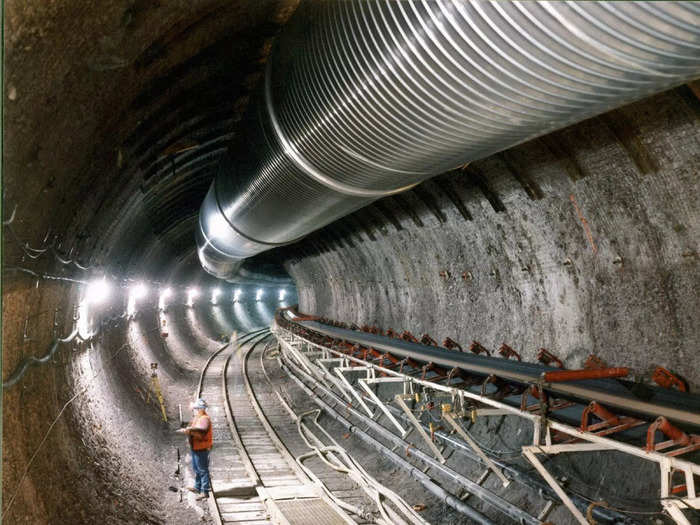
Onkalo could be a model for nuclear waste deposition for the rest of history.
"Regardless of what people think about nuclear power, the waste is there, and there's a lot of it," Blackburn said.
"It's an expensive problem. And it's a problem that should have probably been thought out a lot more in the early days of nuclear power," he said.
Many other countries have been trying to build their own site. China recently started testing whether they could build a geological disposal facility in the Gobi desert by 2050.
Blackburn said that the US and the UK are about 20 to 30 years behind Finland because they haven't even selected a site yet.
READ MORE ARTICLES ON
Popular Right Now
Popular Keywords
Advertisement